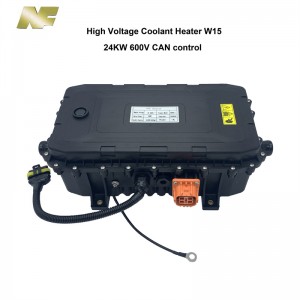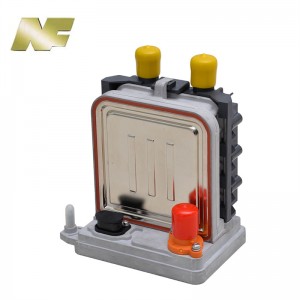Electric cars have unknowingly become a familiar mobility tool. With the rapid spread of electric vehicles, the era of electric vehicles, which are both environmentally friendly and convenient, has officially been ushered in. However, from the characteristics of electric vehicles, where the battery provides all the energy, the struggle for energy efficiency still exists. In response, Hyundai Motor Group has turned its attention to "thermal management" in order to improve the efficiency of electric vehicles. We introduce NF Group's electric vehicle thermal management technology that maximizes the performance and efficiency of electric vehicles.
Thermal management technologies(HVCH) necessary for the popularization of electric vehicles
The heat inevitably generated by electric vehicles has a significant impact on energy efficiency, depending on how they are used. If efficiency is increased in the process of heat dissipation and absorption, both methods of utilizing convenience features and ensuring driving distance can be captured simultaneously.
The more convenience features used in an electric vehicle, the more battery power is used and the shorter the driving distance
Generally speaking, about 20% of the electric energy disappears in heat during the power transmission of electric vehicles. Therefore, the biggest issue for electric vehicles is to minimize the wasted heat energy and increase the efficiency of electricity. Not only that, but from the characteristics of electric vehicles that supply all energy from the battery, the more convenience features used, such as entertainment and co-assistance devices, the smaller the driving distance.
In addition, the battery efficiency decreases in winter, the driving distance decreases than usual, and the charging speed becomes slower. To address these issues, NF Group is working to reduce energy consumption by using waste heat generated by various battlefield components of electric vehicles for heat pump systems for indoor heating, etc.
At the same time, NF Group is continuing to research future thermal management technologies that will improve the efficiency of electric vehicle batteries. Among them, there are also technologies that will be mass-produced soon, such as the "New Concept Heating System" or the new "Heated Glass Defrost System" to minimize the energy supplied from the battery for heating. In addition, NF Group is developing a charging infrastructure called the "External Thermal Management Battery Charging Station". We are also studying "AI-based personalized co-assist control logic" that can improve driver convenience and enjoy energy-saving effects when using co-assist devices in electric vehicles.
External thermal management workstation to maintain battery temperature under a wide range of charging conditions
In general, batteries are known to maintain optimal charging rate and efficiency at about 25˚ while maintaining a temperature of C. Therefore, if the external temperature is too high or too low, it will lead to a decrease in EV battery performance and a decrease in charging rate. This is why a certain temperature management of EV batteries is important. At the same time, the management of the heat generated when charging the battery at high speed also needs more attention. Because charging the battery with more power will generate more heat.
The NF Group's external thermal management station prepares warm, cold cooling water separately, regardless of the external temperature, and supplies it to the interior of the electric vehicle during charging, thus creating a PTC heater(PTC coolant heater/PTC air heater necessary for the thermal management system.




AI-based personalized collaborative control logic improves user comfort and efficiency
The NF Group is helping riders of electric vehicles minimize the operation of their assistance devices and developing "AI-based personalized assistance control logic" that saves energy. This is a technology in which the rider learns the AI vehicle's usual preferred co-assistance settings and provides the rider with an optimized co-assistance environment on its own, taking into account various conditions such as weather and temperature.
AI-based personalized coordination control logic predicts passenger needs and the vehicle creates the optimal indoor coordination environment by itself
The advantages of AI-based personalized collaborative control logic include: First, it is convenient that the rider does not need to directly operate the co-assist device. the AI can predict the desired co-assist state of the rider and implement co-assist control in advance, so the desired room temperature can be achieved faster than when the rider directly operates the co-assist device.
Second, because the co-assist device is operated less frequently, the physical buttons used for co-assist control can be integrated into the touch screen instead of being implemented in the vehicle interior. These changes are expected to contribute to the realization of ultra-thin cockpits and wider interior spaces in future electric vehicles.
Finally, the energy consumption of electric vehicle batteries can be slightly reduced. By minimizing the mutual assistance operation of passengers through relevant logic, progressive and planned thermal state change control can be performed to maximize energy savings. Most importantly, if the AI-based personalized mutual aid control logic is linked to the integrated thermal management control logic of the EV, it is expected that the performance of predicted energy consumption can be improved without passenger intervention. In other words, the more accurate the prediction of the future, the more energy can be systematically controlled, thus improving battery efficiency and minimizing energy consumption from the perspective of total vehicle energy management.
Post time: Mar-29-2023




